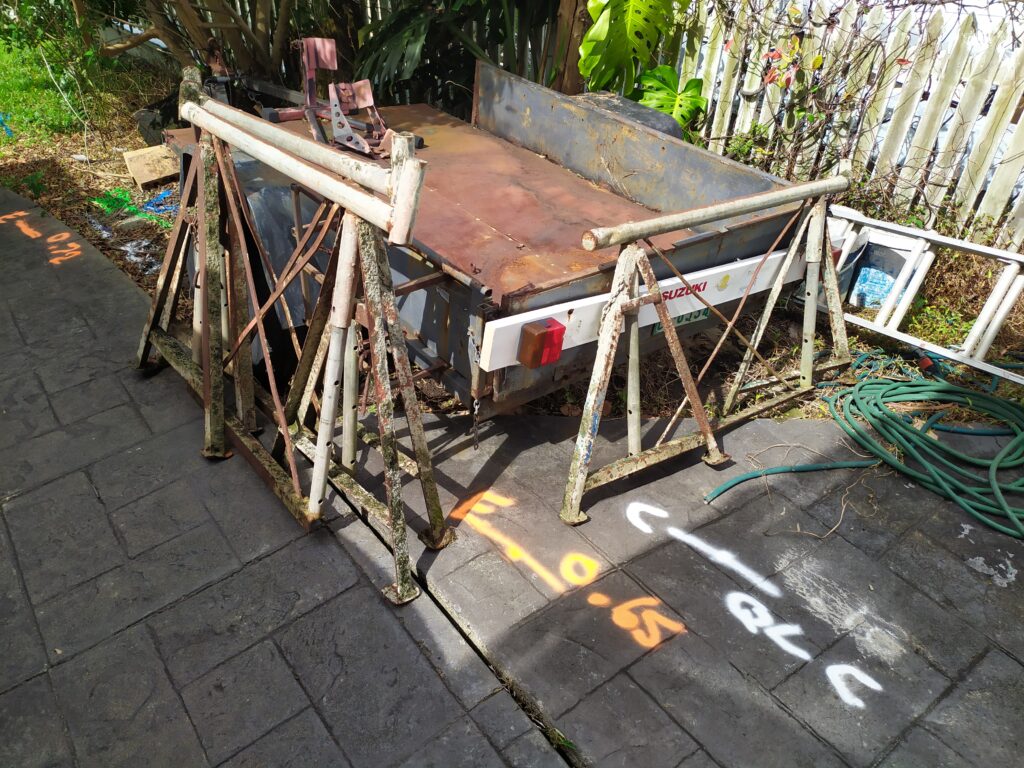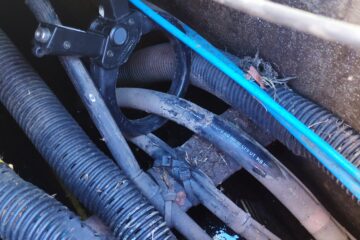Here we can see the electrical line marked in orange, at a nominal depth of 650mm. Depth readings can only be given at points along the line where the electromagnetic field is ’round’ i.e. not significantly affected by distortion from other fields.
Quality level B (QL-B) represents significant risk reduction, with a spatial accuracy of +/- 300mm horizontally and +/- 500mm vertically. While this sounds like a massive tolerance, keep in mind the approach distances such as no mechanical excavation within 1.0m (1000mm) of Telstra assets, and that potholing is required to reach QL-A (positive visual identification, spatial accuracy +/- 50mm horizontally and vertically), before digging.
While the communications line (Telstra lead-in, white) was also EMF located, it could not satisfy QL-B requirements due to the field being non-round at this point, and was marked as QL-C (high risk of damage, no spatial accuracy, identified by plans and surface features).
In this particular case, the lower quality level was probably not so important, as the electrical line proximity to a critical area in the site meant that vacuum excavation (a ‘non-destructive’ digging method) would be necessary if work in that area was to proceed, which would reduce the risk of damage to both cables.
It is likely that the proximity to both the property electrical mains cable, and the electrical box near the house, is what distorted the field while tracing the communications cable. You may ask why the reverse was not the case? It is possibly due to the fact that once the trace signal was moved from the comms line to the electrical line, there would be very little electromagnetic interference (EMI) output from the comms lead-in to distort the electrical line trace, whereas the electrical line would constantly be emitting a relatively strong field which would interfere with our signal on the comms line. Additionally, a lower frequency was used to trace the electrical line, whereas the higher frequency used on the comms lead-in may have suffered more interference from the electrical line.



0 Comments